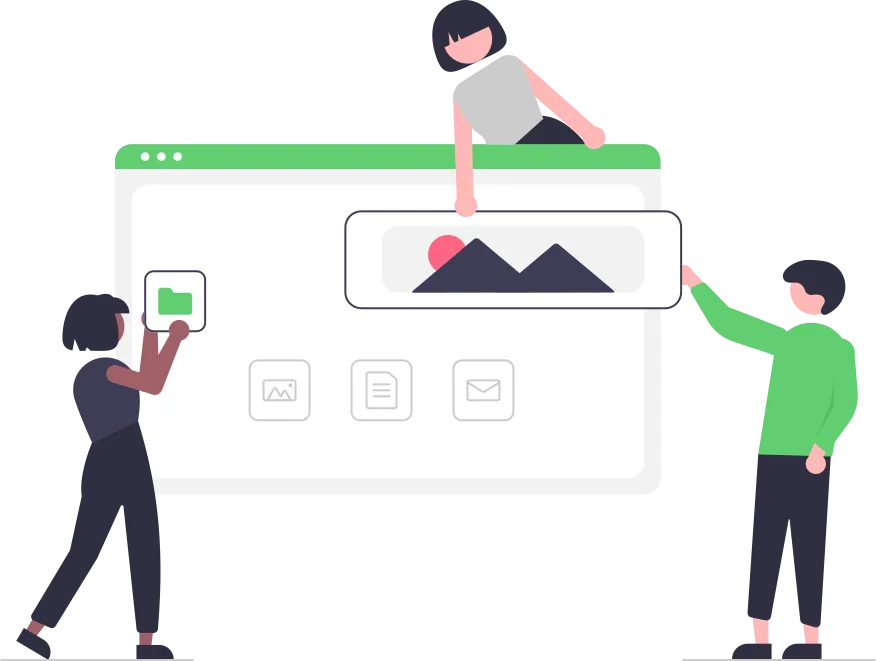The world has gone mobile. With the number of smartphone users on the rise, it’s crucial that businesses have a website that is responsive and mobile-friendly. In today’s day and age, customers demand seamless experiences across all devices, including desktops, laptops, tablets, and smartphones. In this article, we’ll discuss the importance of mobile responsiveness in web design and the benefits it can bring to your business.
What is Mobile Responsiveness in Web Design?
Mobile responsiveness in web design refers to the ability of a website to adapt to different screen sizes and resolutions. A mobile-responsive website is designed to provide an optimal user experience, regardless of the device being used to access it. This means that the website’s layout, content, and functionality must adjust dynamically to fit the user’s screen, whether it’s a large desktop monitor or a small smartphone screen.

Why is Mobile Responsiveness Important?
Improved User Experience
The most significant benefit of mobile responsiveness in web design is an improved user experience. Mobile-responsive websites are designed to be user-friendly and easy to navigate, making it easier for customers to find what they’re looking for quickly. If your website is not optimized for mobile devices, users may find it difficult to navigate, resulting in frustration and ultimately, a higher bounce rate.
Increased Mobile Traffic
With the rise of mobile devices, more and more users are accessing the internet through their smartphones and tablets. In fact, mobile traffic has surpassed desktop traffic in recent years, making it essential for businesses to have a mobile-responsive website. If your website is not optimized for mobile devices, you risk losing potential customers who are searching for your products or services on their smartphones or tablets.
Better SEO Rankings
Google and other search engines prioritize mobile-responsive websites in their search results. A mobile-responsive website is seen as an indicator of a quality website that provides a positive user experience. If your website is not optimized for mobile devices, it may affect your SEO rankings negatively, resulting in lower visibility and fewer clicks.
Cost-Effective Solution
Building a mobile-responsive website is a cost-effective solution for businesses that want to improve their online presence. Rather than building a separate mobile website, a mobile-responsive design allows you to maintain a single website that adapts to different devices. This means that you won’t have to spend extra time and money maintaining two separate websites.
How to Create a Mobile-Responsive Website?
Creating a mobile-responsive website requires careful planning and design. Here are some tips to ensure that your website is optimized for mobile devices:
- Use a Responsive Design Framework
A responsive design framework is a collection of pre-designed templates and code snippets that make it easier to create a mobile-responsive website. These frameworks are designed to be flexible and adaptable, making it easier to create a website that looks great on all devices.
- Optimize Images and Videos
Large images and videos can slow down your website’s load time, making it less mobile-friendly. To ensure that your website is optimized for mobile devices, make sure to compress your images and videos to reduce their file size.
- Use a Mobile-Friendly Font
Fonts that are easy to read on a desktop may be difficult to read on a mobile device. To ensure that your website is mobile-friendly, use a font that is easy to read on all devices, including smartphones and tablets.
- Simplify Navigation
Mobile users have limited screen space, making it essential to simplify your website’s navigation. Use a hamburger menu or other mobile-friendly navigation design to ensure that your website is easy to navigate on all devices.
- Test, Test, Test
To ensure that your website is truly mobile-responsive, you need to test it on different devices and screen sizes. Use tools like Google’s Mobile-Friendly Test to ensure that your website is optimized for all devices
- Prioritize Content
When designing a mobile-responsive website, it’s important to prioritize content. Ensure that the most important information is displayed prominently on the homepage and that it’s easy to find on all devices. This will make it easier for users to find what they’re looking for quickly and efficiently.
- Use Responsive Images
Using responsive images is essential for a mobile-responsive website. These images automatically adjust to the user’s screen size, ensuring that they look great on all devices. This can help to improve your website’s load time and make it more user-friendly.
- Optimize Your Website’s Speed
Mobile users expect fast load times, so it’s important to optimize your website’s speed. This can be achieved by using a content delivery network (CDN), optimizing images and videos, and minimizing the use of third-party scripts and plugins.
Conclusion
In today’s mobile-first world, having a mobile-responsive website is essential for businesses that want to stay competitive. A mobile-responsive website provides a positive user experience, increases mobile traffic, improves SEO rankings, and is a cost-effective solution.
When designing a mobile-responsive website, it’s important to prioritize user experience, optimize images and videos, use a mobile-friendly font, simplify navigation, prioritize content, use responsive images, and optimize your website’s speed. By following these tips, you can create a website that looks great on all devices and provides a seamless user experience.




